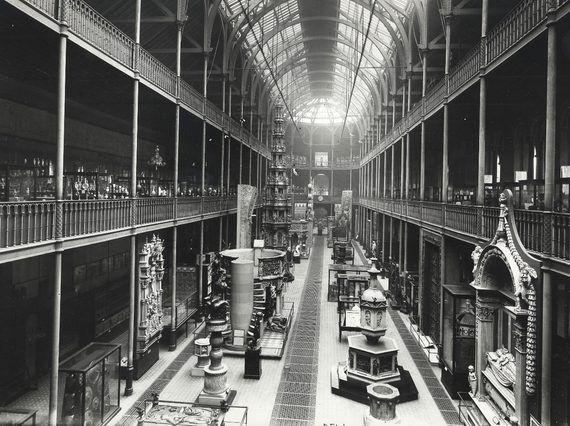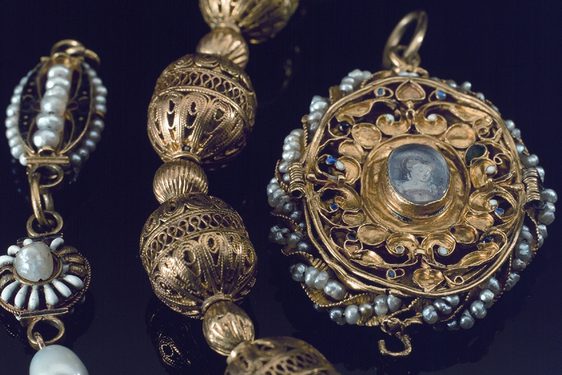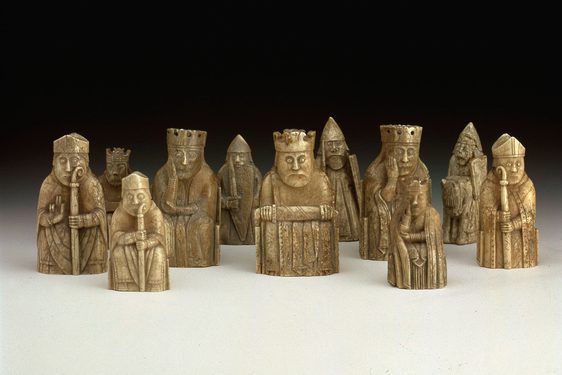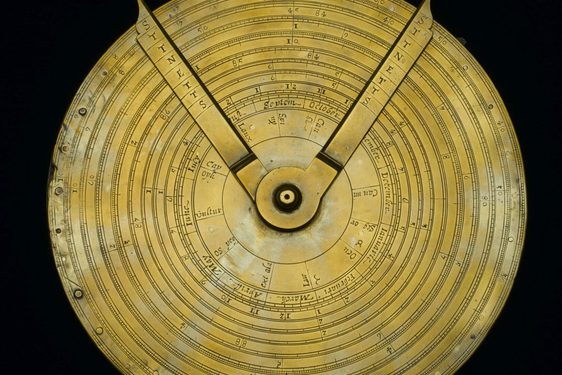
History
Discover the story of National Museums Scotland, from our 18th century beginnings to the present day.
Two strands of history come together in the story of the development of National Museums Scotland: the desire to have a museum reflecting Scottish history and the wish to have a museum demonstrating international cultures, natural and physical sciences, and decorative art for Scotland.
Beginnings: The Society of Antiquaries of Scotland
The Society of Antiquaries of Scotland was founded in 1780, very much in the spirit of the Enlightenment, to collect the archaeology of Scotland. Its collections passed into public ownership in 1851 as the original collections of the National Museum of Antiquities of Scotland.
These collections, which had had various homes previously, were housed from 1891 until 1995 in specially built galleries in Finlay Buildings, Queen Street, Edinburgh (also occupied by the Scottish National Portrait Gallery). The annual proceedings of the Society of Antiquaries provide an invaluable record of research carried out on the archaeology collection, from their first publication in 1851 to the present day.
A new home
In 1985 the National Museum of Antiquities was amalgamated with the Royal Scottish Museum. The latter was founded in 1854 as the Industrial Museum of Scotland and reflected the impetus of Victorian ideals of education. It started international collecting and research as well as forming close links to the collections and teaching of Edinburgh University, which continue today. Renamed the Edinburgh Museum of Science and Art, it opened in its first bespoke buildings, designed by Francis Fowke, in Chambers Street in 1866.
The 1985 amalgamation created the National Museums of Scotland (now National Museums Scotland), the largest multi-disciplinary museum in Scotland, with 12 million items in its collections and the largest body of curatorial and conservation expertise in the country.
National Museum of Scotland
The building of the new Museum of Scotland, which opened in 1998, to tell the country’s history from earliest times to the present day, created a landmark museum in Edinburgh for the nation.
The redevelopment of the National Museum of Scotland transformed the adjacent Victorian building into a vibrant museum for the 21st century, opening up public spaces, providing new facilities and displaying our natural world, world cultures, art and design and science and technology collections in innovative new ways.
When the new galleries opened on 29 July 2011, the museum united the two strands of its history for the first time in a single entity, creating the National Museum of Scotland on Chambers Street.
National Museums Scotland today
Today, National Museums Scotland also includes the National Museum of Flight, the National War Museum and the National Museum of Rural Life.
The National War Museum was founded at Edinburgh Castle in 1930 as the Scottish United Services Museum to tell the story of Scotland's Armed Forces. In 1970 it became part of the Royal Scottish Museum and in 2000, the refurbished museum reopened as the National War Museum.
In 1971, the Ministry of Defence donated a Supermarine Spitfire to the Royal Museum in Edinburgh. Due to lack of space to accommodate the aeroplane, the museum was granted permission to acquire one of the hangars of RAF East Fortune in East Lothian, as a storehouse for aeronautical exhibits. With this, the seeds were sown for the development of National Museum of Flight. The museum officially opened to the public on 7 July 1975. You can read more about the history of East Fortune Airfield.
The National Museum of Rural Life first opened in Ingliston in 1982 as the Scottish Agricultural Museum. In 2001, then called the Museum of Scottish Country Life, it relocated to Kittochside, East Kilbride.
National Museums Scotland's collections are housed principally in the National Museums Collection Centre at Granton.
In 2014 National Museums Scotland announced the third stage of its ambitious £80 million Masterplan to restore the much loved Victorian building on Chambers Street to its former grandeur and reveal the remarkable treasures of its collections. The project involved the creation of ten new galleries to showcase our Art, Design and Fashion and Science and Technology collections, which opened on 8 July 2016.
In February 2019, the transformation was completed with the opening of three new galleries. These galleries, dedicated to Ancient Egypt, East Asia and the Art of Ceramics, were the final part a 15-year journey, restoring one of the UK’s finest Victorian buildings, revealing remarkable treasures, and creating inspiring learning experiences to engage more visitors.
Directors of National Museums Scotland
National Museum of Antiquities (1858-1985)
1859 – 1869 William T McCulloch
1869 – 1913 Joseph Anderson
1913 – 1919 Alexander O Curle (also director of RSM 1916-1919)
1919 – 1938 John G Callander
1938 – 1944 Arthur J H.Edwards
1944 – 1945 Gordon V Childe
1946 – 1978 Robert B K Stevenson
1978 – 1985 Alexander Fenton
1985 NMAS and RSM amalgamated to form National Museums Scotland
Industrial Museum of Scotland (founded 1854)
1855 – 1859 George Wilson
1860 – 1864 Thomas C Archer
Edinburgh Museum of Science and Art (renamed 1864)
1864 – 1885 Thomas C Archer
1885 – 1900 Robert Murdoch Smith
1900 – 1903 Francis Grant Ogilvie
1903 – 1904 James J Dobbie
Royal Scottish Museum (renamed 1904)
1904 – 1909 James J Dobbie
1909 – 1911 David J Vallance (acting)
1911 – 1916 Thomas Carlaw Martin
1916 – 1931 Alexander O Curle (also director of NMAS 1913-19)
1931 – 1934 Edwin Ward
1934 – 1944 Thomas Rowatt
1945 – 1961 Douglas A Allan
1961 – 1971 Ian Finlay
1971 – 1984 Norman Tebble
1984 – 1985 Robert Anderson
National Museums of Scotland (Royal Scottish Museum amalgamated with National Museum of Antiquities in 1985)
1985 – 1992 Robert Anderson
1992 – 2001 Mark Jones
National Museums Scotland (renamed 2006)
2002 – 2020 Gordon Rintoul
2020 – Dr Chris Breward

Strategy
Our mission is to preserve, interpret and make accessible for all, the past and present of Scotland, other nations and cultures, and the natural world.
Executive team
The Executive Team is fully responsible for the day-to-day operation of National Museums Scotland and for the implementation of strategy.
Board of Trustees
The Board of Trustees is National Museums Scotland’s governing body. It is responsible for setting the organisation’s strategic direction and for monitoring progress to achieve this.